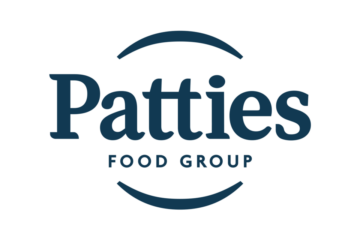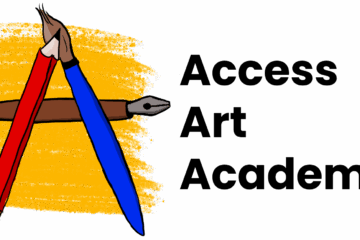Several Dutch companies have operations in Australia today. The members of the Netherlands Chamber of Commerce in Melbourne and Dutchlink in Sydney include Dutch mastheads like Rabobank, Randstad, ING, Heineken and Vopak.
Australia has long been relatively open to inward investment by foreign companies. In per capita terms, it has long been a major recipient of the foreign direct investment (FDI) that these companies brought. Until the 1920s, mostly British firms that established subsidiaries in Australia. Since the 1920s, American and European companies started to find their way into Australia, followed since the 1960s by Japanese firms and more recently firms from other countries.
As part of a research project on the operations of foreign-owned companies in Australia, I created a database of these companies since the 1820s. It allows the identification of Dutch firms that at some stage during their existence in The Netherlands established subsidiary operations in Australia.
The history of the internationalisation of Dutch companies goes back to at least the 17th century with the establishment of chartered companies such as the United East India Company in 1602. It took until 1853 for the first Dutch firm to establish a subsidiary operation in Melbourne. This was when two of the sons of Amsterdam trader B.J. Ploos van Amstel established an import-export wholesale company in Melbourne that maintained business contact with the their father’s company and their agents in Indonesia.
The Netherlands India Marine and Fire Insurance Company followed the Ploos van Amstel brothers to Australia in 1861 and the Batavia Marine and Fire Insurance Company in 1864. Both appointed agents to sell insurance policies in Australia. In 1908, the Netherlands-registered Royal Packet Navigation Company (KPM) started its Java-Australia Line and appointed Australian agents to muster freight.
A representative of Philips arrived in 1910 to take orders for Eindhoven-produced incandescent lamps. Two years later, Philips appointed Warburton Franki in Melbourne and Lawrence & Hanson Electrical in Sydney as agents for lamp sales in Australia. In 1926 it established its own subsidiary company Philips Lamps (Australasia) Pty Ltd in Sydney.
The graph below summarises the arrivals of Dutch firms in Australia in blue. During the first 100 years, only 14 companies arrived. Since the 1950s, their numbers increased quickly. Increased scrutiny of inward foreign investment by Australia’s Foreign Investment Review Board contributed to a lull in new arrivals during the 1970s. Slowdowns of economic growth and business opportunities in both Australia and The Netherlands also dampened foreign investment. Altogether, from 1848 to 2019, 152 Dutch firms arrived in Australia. Together they established or acquired 444 subsidiary companies in Australia during their lifetime, shown in red.
After arrival in Australia, Dutch firms became more familiar with the country’s business environment. The successful ones expanded their operations through new investments or by acquiring existing local companies.
Philips Australia dominates the trend in the total number of established subsidiary companies. Since its establishment, the firm was only a small part of the global operations of the Philips multinational company. However, in Australia it was one of the biggest foreign-owned companies. During the 1950s and 1960s, Philips Australia was highly profitable. It re-invested much of its excess earnings and expanded the scale and scope of its operations in Australia.
Expanding scale took the form of the expansion of the production capacity of Philips Australia’s multi-factory plant in Hendon near Adelaide during 1946-1980. It came to include factories for the production of transistors in 1959 and integrated circuits in 1970. At its peak in 1960, the Hendon plant employed 3,500 workers in 1960.
Increasing the scope of Philips operations took the form of the acquisition of existing companies, such as Morlite Pty Ltd and its factory producing light fittings in Brookvale (NSW) in 1963. It also establishing new companies, such as Philips-TMC Ltd in 1971 with a factory in Moorebank (NSW) for the production of telecommunications equipment. After its 1970 acquisition of Electronic Industries Ltd in Melbourne, which produced under the Astor brand name, Philips Australia had 74 subsidiary companies in 1971 when it employed more than 11,000.
The table below shows that other Dutch firms also had subsidiaries during their lifetime in Australia. For example, Bredero’s Bouwbedrijf entered Australia in 1951 as a contractor to build houses in Cooma. Its energetic representative Dick Dusseldorp arranged for Bredero to become the parent company of Civil and Civic Contractors Pty Ltd (CCC), a company. Through the CCC subsidiary Lend Lease Corporation Ltd, Bredero acquired interests in 15 other Australian companies during the 1960s, until it in 1970 divested its interest in CCC.
Another example is Randstad, which entered Australia in 1988 and acquired several local companies. Dutch rival Vedior used the same strategy since 1999. Randstad acquired Vedior in The Netherlands in 2007 and rebranded Vedior’s subsidiaries in Australia.
The table indicates that over time several Dutch companies withdrew from Australia, generally by divesting their subsidiary operations. For example, after 1971, Philips Australia reduced its large number of subsidiaries to 20 in 1990 and 7 in 2020, before the parent company sold its global domestic appliances business to concentrate on medical technology.
The numbers of arrivals in the graph above do not show how Dutch firms dealt with the idiosyncrasies of Australia’s business environment. What over time became natural for Dutch migrants establishing a new life in Australia was each time a challenge for newly arriving Dutch companies. For example, the distribution of responsibilities between the Australian Commonwealth and the States and the different State legislations confounded new arrivals. The fact that Australia had major labour shortages during the 1940s-1970s, and very high labour costs, was often a challenge. As were the enormous distances that separate Australia’s urban markets.
Most arriving companies learned to deal with these idiosyncrasies, persisted and have by now a long history of operating in Australia. Examples in the table are Philips and agricultural trading company Bunge, which can look back at more than 100 years in Australia.
Other firms found Australia’s business environment difficult and soon divested. For example, Batterijenfabriek Herberhold in Utrecht, producer of Witte Kat batteries, made plans in 1930 to manufacture batteries in Melbourne. In 1931 the Herberhold’s Dry Batteries (Australia) Pty Ltd subsidiary company was established, which in 1931 opened its battery factory. At this time, Australia’s economy suffered badly from the 1929 international economic crisis. Herberhold closed its Melbourne factory in 1936.
For some companies, there is some ambiguity whether they are subsidiaries of a Dutch parent company. For example, Royal Dutch Shell formed in 1907 after a British-Dutch merger and retained headquarters in both The Hague and London. The company’s Australian operations were long subsidiaries of the British branch of the company.
Hunter Douglas was originally an American company that operated in Australia via its Canadian subsidiary, until it moved its headquarters to Rotterdam in 1971. Likewise, IKEA was a Swedish company, until it established its headquarters in Delft in 1983. A year later the company started its Aust Scan Pty Ltd subsidiary, the Australian IKEA franchisee, which now operates as IKEA Pty Ltd.
Due to this ambiguity and differences in interpretations about the location of the ultimate controlling parent company, it is not clear how many subsidiaries of Dutch companies operate in Australia today. The Australian Bureau of Statistics (ABS) calculated for 2015 that 195 companies in Australia were owned by firms located in The Netherlands.
By contrast, the Central Bureau of Statistics (CBS) in The Netherlands found 245 subsidiaries of Dutch companies operating in Australia in 2015 and 285 in 2020. In 2020, 45 of these 285 companies were in manufacturing industry, 60 in wholesale and retail trade, and 45 in specialised business services. Together they employed 18,000 Australians.


